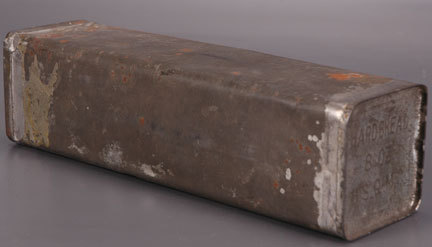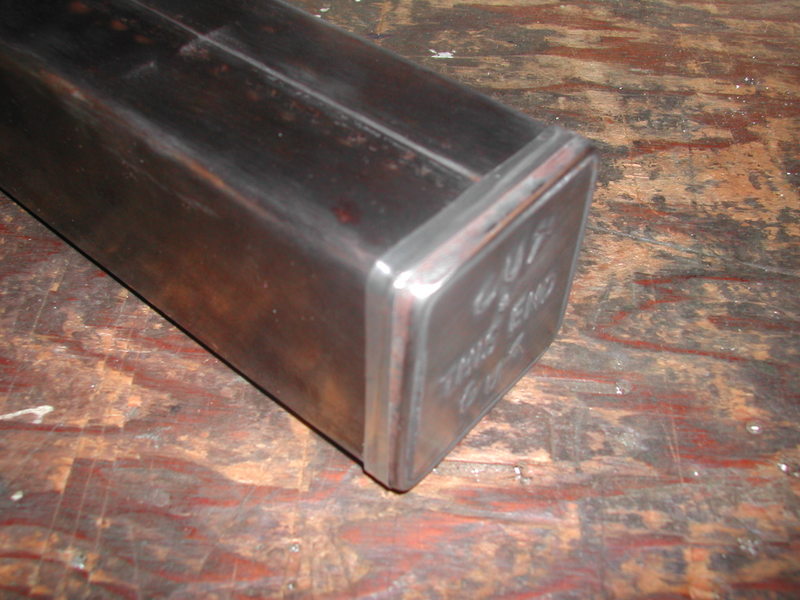


Increasing the Authenticity and Function of Reproduction Hardbread Tins
by Tom Clegg
Des Moines, Iowa
www.comradesinarms.orgFrom the minutemen fighting to secure freedom from a tyrannical king to today’s troopers fighting to secure democracy from fanatical extremists, the haversacks of the American fighting man have always contained two, largely unchanged and vital issue items: coffee and hard-bread or, as it is called today, crackers.
With the Great War the terms asphyxiating, burning and poisonous gases were added to the glossary modern warfare. With them came a change in the manner in which food rations were packaged. To prevent contamination from gas, coffee was carried in the ubiquitous condiment can, meat in the reusable bacon can and the bread came issued in disposable tin box shaped cans.
Figure 1. An example of an original WW1 era hard bread tin.Original bread rations are exceedingly rare on the militaria collecting market today simply because they we largely used up in the post war years providing relief to the displaced persons of war torn Europe.
The living historian desiring to portray the Doughboy of World War One needs this vital element in his impression.
Schipperfabrik – www.schipperfabrik.com – is the only vendor of reproduction hardbread tins on the market and the author is grateful that Paul Schipper has made these important items available to the living historian portraying the American soldier."
Overall they are good facsimiles of the originals. The open end is obviously made differently from the original so as to create a functioning reusable cap. But as you may have also found out it is dubious at best when used in the field. The cap end pops off and the tin immediately lacks structural integrity and viola’ the tin is open and the hard bread is crushed, or tossed about.
With a little tinkering, a bench grinder, lighter-fluid and metal tape you can dramatically increase the authenticity and functionality of the reproduction bread tin.
Step One:
Remove the rim from the cap end with a grinder so that the cap, when attached, is flush with the body of the tin and no lip appears.
Figure 2. The reproduction hardbread tin with the lip trimmed down and ready to be taped on.Step Two:
Thoroughly clean the surface with lighter fluid, acetone or equivalent and with 1/4" silver metal tape secure the lid to the tin. This looks a great deal like the original soldered joint!
Figure 3. The completed project with the lid taped on with the silver tape.When it comes time to open your ration, the tape cuts easily it with your knife! This tape is found in the stained glass area of your local craft store. The author found his at Hobby Lobby – www.hobbylobby.com. It may require some effort and many craft store carry copper tape.
This not only makes for an aesthetic functional seal but it also increases the structural integrity of the tins and allows the reenactor to correctly pack the M1910 dismounted haversack!
Since the ration tins were originally intended to be disposable the reproduction tins, like the originals, are easily crushed when empty. For the living historian in the field today it is advisable to either lay the empty tin aside to be retrieved after the event has concluded, so that they be reused in this manner again or to fill the empty tin with spare socks or some other item to retain rigidity to avoid crushing.


